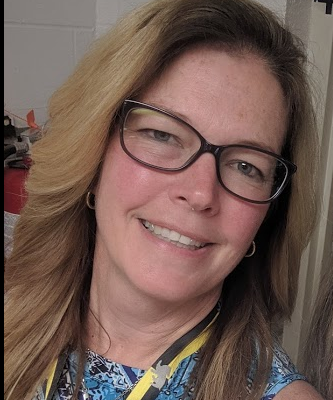As educational communities grow more comfortable with integrating technology into teaching and learning practices, we can easily get caught up in all that is “shiny” and “new.” Sure, the SAMR model is still here guiding the pedagogical practices of instructional technology, but in my experience in teaching with digital tools across grade levels (Kindergarten through High School), I’m reminded recently that it isn’t about the tool, but what students do with it. A good “tech tool” is one that amplifies and celebrates the most important aspect of any classroom: student voice.
 Facilitating Student Voice
Facilitating Student Voice
In a paper titled “Motivation, Engagement and Student Voice” from “The Students at the Center: Teaching and Learning in the Era of the Common Core,” Eric Toshalis and Michael Nakkula write that “Promoting student voice can be of enormous benefit to the teacher’s craft as well. When teachers open space for voice in the classroom, a unique window into what the student thinks and feels about her learning also opens. When student voice is facilitated, the teacher can observe how the student is making sense of things and where that student wants to go with that knowledge. Such information is invaluable to the teacher designing instruction to meet individual needs.” (Toshalis and Nakkula, 2012) As teachers, it’s our responsibility to create the space for our students to engage in their learning in authentic ways that put them in the center, not us. When the kids are at the center, teachers can respond to individual needs in more realistic and effective ways. We need to build our classrooms around our kids, not the adults. There isn’t anything more innovative than embracing student voice.
Enter Flipgrid
 Recently acquired by Microsoft for Education, Flipgrid is a powerful, game-changing tool that has transformed the teaching and learning of students at my school. It is an easy-to-use, comprehensive and wildly fun digital platform that gives students, teachers and community members the ability to record, organize and share quick videos. Sounds simple, right? That’s because it is!
Recently acquired by Microsoft for Education, Flipgrid is a powerful, game-changing tool that has transformed the teaching and learning of students at my school. It is an easy-to-use, comprehensive and wildly fun digital platform that gives students, teachers and community members the ability to record, organize and share quick videos. Sounds simple, right? That’s because it is!
Teachers may sign up for Flipgrid by logging in with their district’s Google or Microsoft O365 accounts and, create a “Grid” in minutes. Within the “Grid,” “Topics” can be created by teachers. Videos can then easily be recorded within a “Topic” using any device such as a Chromebook, Surface tablet, Windows or Mac laptop, or Android and iOS mobile devices.
As Flipgrid users become more advanced, they can explore the “Topic Library,” where thousands of teachers around the world have contributed launch points for lessons that utilize Flipgrid. There’s something for everyone: any grade, any subject. It’s awesome! Also, as teachers start to build their library, they can add them to “MixTapes,” a section on Flipgrid where teachers can save, showcase and share videos from their Topics.
Educational Uses
At our school, we’ve used Flipgrid to create a library of Read Alouds from teachers and community members to coincide with #WorldReadAloudDay, give traveling students an opportunity to share their world-wide experiences (imagine a video of a student riding on the back of a scooter with their cousin through the busy streets of New Delhi!) and connect with classes in another state to do some first-hand research about another part of the country. Flipgrid can be used on a district-wide scale or with just with a few people in a book group. The possibilities are endless!
If you want to dive deeper into Flipgrid, check out their amazing educator community on Twitter at #FlipgridFever, or go to their website to learn more.
Chris Gosselin (@cjgosselin) is the Digital Learning Coach at Sanborn Elementary School (@sanbornschool) in Andover (@andoverps, @apsdigitallearn). He serves on the MassCUE Board of Directors and Chairs the Development and Outreach Committee.
 Print this post
Print this post



